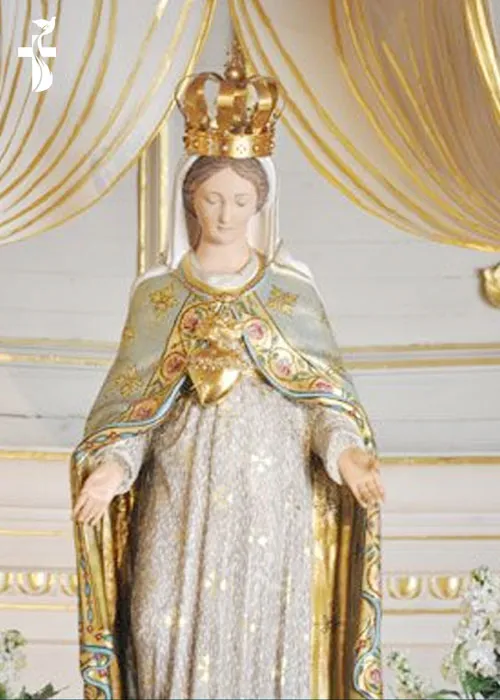
Our Lady Of The Cape
Country :
Year :
Father Luke Delilets was sent to the little town of Cape de la Madeleine on the St. Lawrence River in the province of Quebec. His new parish was rich in history but poor in faith. His church, built in 1714, was a century and a half old and it had replaced the original chapel built in 1659. By the middle of the nineteenth century, the people of the district had become extremely lax.
One evening Father Desilets went into his church and found, before the statue of the Virgin, a small pig with a rosary between its teeth. “There,” the priest said, “men drop their beads, but the very beasts pick them up!” He knelt before the statue and promised to spend the rest of his life spreading devotion to the rosary. Immediately afterward there was a remarkable rebirth of piety among his people.
For eight days the men brought the stones over the Bridge of Rosaries on their sledges; pools swirled a few feet from the path across the ice, but there were no accidents. On the eighth day the weather turned warmer; the stones had been hauled. Father Desilets ordered the work to stop; in the afternoon the passage was swept away. The new church was built, and the ancient chapel dedicated to the Queen of the Rosary, on June 22, 1883. On dedication evening Father Desilets and two other priests knelt in the church where that day the statue of the Virgin had been moved from the side to the main altar. As they knelt, the priests saw the downcast eyes of the statue open wide and look up to heaven!
Father Desilets died a month later, his work was accomplished. The miraculous statue called Our Lady of the Cape, was crowned in 1904 by authority of Pope Pius X. In 1909 the Bishop of Canada proclaimed the chapel to be a National Shrine to the Blessed Virgin. The shrine is visited by about 230,000 pilgrims each year.



